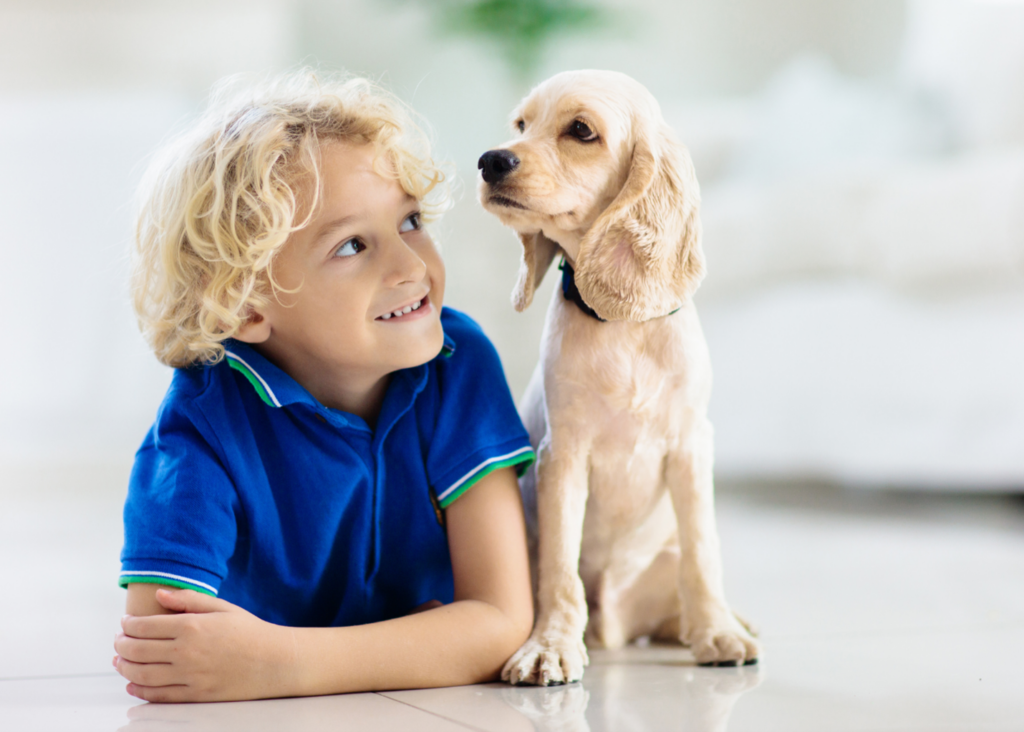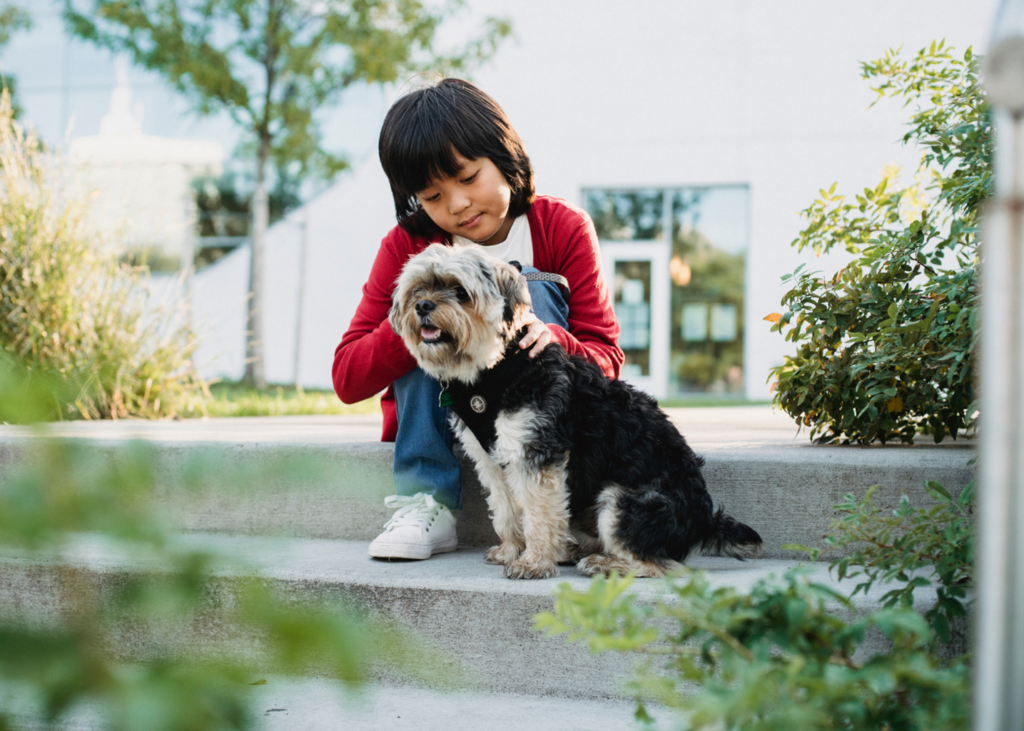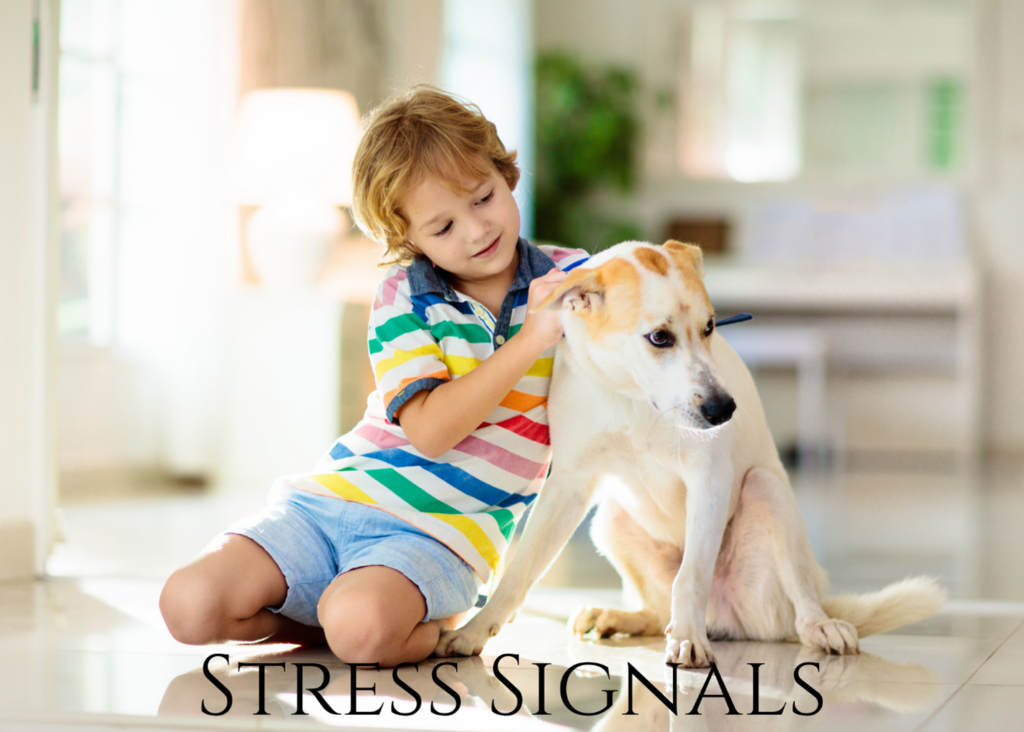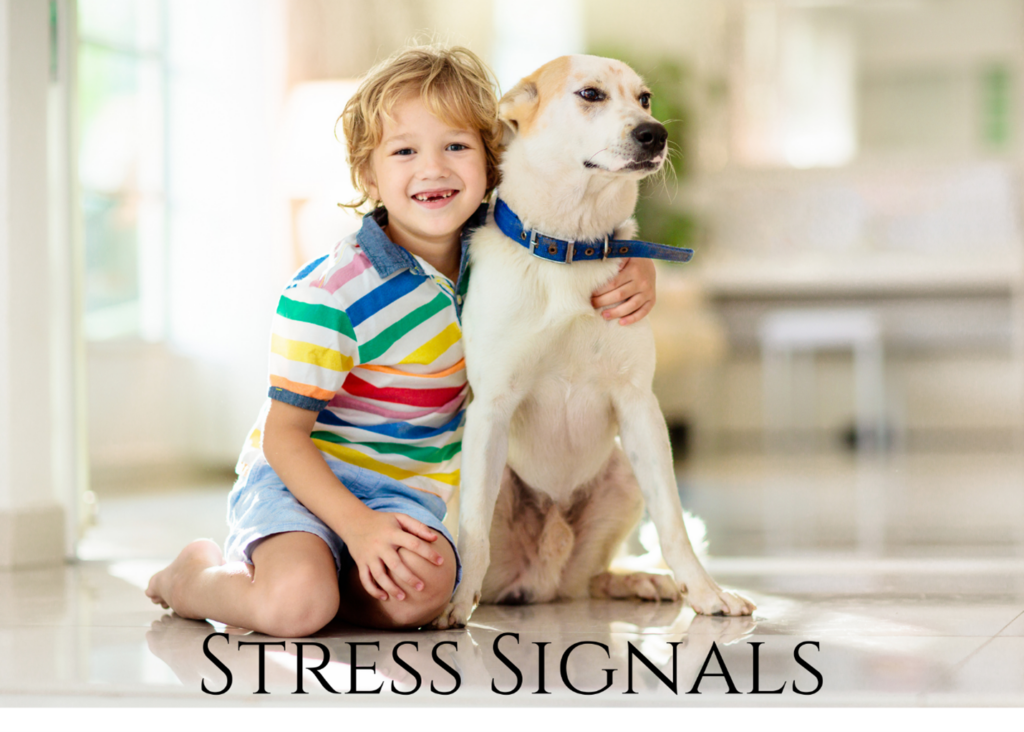National Kids and Pets Day (April 26th) provides a unique opportunity to celebrate the special bond between children and their animal companions. However, it also serves as a great reminder of the potential risks involved in these interactions. With the Humane Society estimating that 51% of dog bite victims are children, and the American Veterinary Medical Association noting that children aged 5 to 9 have the highest rate of dog bites, it's clear that proactive measures are needed to keep things safe.
By teaching the best behaviors for kids to practice and setting clear safety guidelines, we can help children and pets enjoy their time together while minimizing the risk of accidents!
Daily Practices to Ensure Safety in the Household

Creating a safe and nurturing environment for both children and pets involves more than just good intentions; it requires consistent practice and following certain safety measures. Here are several daily practices that can help:

Interacting with a dog can be one of the greatest joys of childhood, but children must learn how to do so safely and respectfully. Educating them on the proper way to approach and engage with dogs will not only protect them but also enhance the bond they share with their four-legged friends.
- Approach Techniques: Teach children to allow a dog to see and sniff them first before petting it, which can be practiced with a friendly, familiar dog under adult supervision. This helps the child understand the importance of not surprising the dog or invading its space suddenly.
- Appropriate Petting Zones: Educate children on where dogs generally like to be petted, such as the chest or shoulders, and areas to avoid, like the top of the head or the paws. Practice with a toy dog to help children learn these zones.

Safety Tips for Kids Around Strange Dogs
When encountering dogs outside their immediate family circle, it’s important for kids to practice even greater caution. These safety tips are crucial when dealing with unfamiliar dogs:
- Always Ask Permission: Before petting a dog, children should always ask the dog's owner for permission. This not only ensures that the dog is comfortable with strangers but also gives the owner the opportunity to prepare the dog for interaction.
- Avoid Direct Eye Contact: Teach children that staring directly into a dog’s eyes can be perceived as a challenge or threat. Explain safe ways to approach a dog by demonstrating how to glance at the dog's back or sides instead.
- What to Do if Approached by an Unfamiliar Dog: Instruct children to stand still, keep hands at their sides, and avoid making loud noises if an unfamiliar dog approaches them. Practicing this "be a tree" stance can help children remember what to do in the heat of the moment.
- Supervised Interactions: Always supervise interactions between young children and pets. For instance, during playtime, an adult should be present to oversee the activities and intervene if the play becomes too rough or if the pet shows signs of stress or aggression.
- Teach Respect for Boundaries: Pets, like people, need their own space. Children should learn to recognize and respect the signs that a pet needs solitude, such as retreats to a crate or a specific resting spot. For example, if a dog goes into its crate, children should know that this means the dog needs some alone time and should not be followed or poked.
- Consistent Routine: Pets thrive on routine, and a predictable schedule for meals, walks, and playtime can reduce anxiety and misbehavior. For example, if walks are usually at 8 AM and 5 PM, sticking to these times can help the pet remain calm and predictable.
- Gentle Handling: Teach children how to touch and handle pets gently to avoid causing distress or irritation, which could lead to negative reactions. Show children how to pet animals softly using open hands and avoiding sensitive areas like the tail and face. Demonstrate the difference between gentle petting and rough handling by guiding their hands.
Tips to Teach Kids on How to Interact with Dogs

Reading Dog Body Language: Help children recognize when a dog is happy (wagging tail held high, relaxed posture, playful behavior) versus when it is scared or upset (ears pinned back, low tail, growling). Use picture books or videos as tools to illustrate examples of dog body language.
Safety Tips for Kids Around Strange Dogs
When encountering dogs outside their immediate family circle, it’s important for kids to practice even greater caution. These safety tips are crucial when dealing with unfamiliar dogs:
- Always Ask Permission: Before petting a dog, children should always ask the dog's owner for permission. This not only ensures that the dog is comfortable with strangers but also gives the owner the opportunity to prepare the dog for interaction.
- Avoid Direct Eye Contact: Teach children that staring directly into a dog’s eyes can be perceived as a challenge or threat. Explain safe ways to approach a dog by demonstrating how to glance at the dog's back or sides instead.
- What to Do if Approached by an Unfamiliar Dog: Instruct children to stand still, keep hands at their sides, and avoid making loud noises if an unfamiliar dog approaches them. Practicing this "be a tree" stance can help children remember what to do in the heat of the moment.
The joy that a pet brings into a child's life is huge, but it comes with the responsibility of keeping everyone safe. By practicing these safety tips in your family’s routine, you can significantly reduce the risks associated with child-pet interactions. Remember, the goal is to nurture a safe, respectful, and loving relationship between your children and their pets, to improve their lives and build lasting bonds. On this National Kids and Pets Day, let's commit to making every interaction between our children and pets a positive and safe one!
Leave a Reply